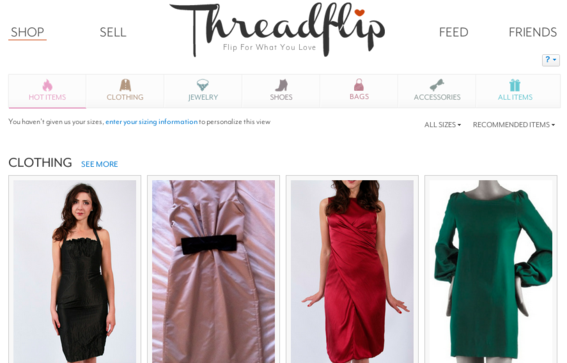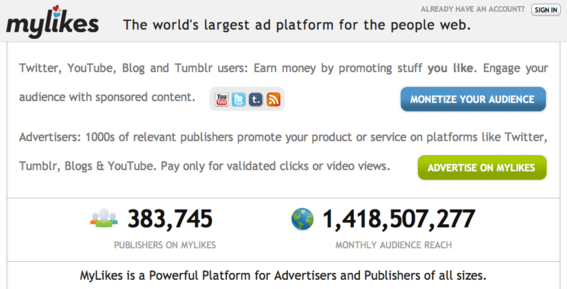Today’s social shopping sites are the online equivalent of old-fashioned swap meets and flea markets. They bring thousands of buyers and sellers together in a social environment where shoppers can rely on friends to help them shop and connect with merchants.
These social marketplaces are also channels through which smaller merchants can get products discovered outside their own ecommerce websites.
Here is a list of eight social shopping sites worth checking out.
1. Etsy

Etsy is designed for merchants who sell handmade and vintage products.
Etsy may be the leader of the social marketplace movement. It provides very small businesses with the ability to sell handmade and vintage products to consumers in bazaar-style fashion.
From an ecommerce perspective, Etsy makes it possible for sellers to move from hobbyist status to full-time businesses. And, for buyers interested in handcrafted or vintage items, it makes the job of product discovery much simpler. Socially, the site functions as an online community where buyers and sellers can come together to discuss the products they love.
—
2. Envato

Envato specializes in digital products such as WordPress themes.
Envato Marketplaces allow anyone to buy or sell digital goods like WordPress themes, background music, Adobe After Effects project files and Flash templates. The marketplaces have more than 500,000 users, authors and buyers. New files are added daily.
—
3. Threadflip

Threadflip is similar to Etsy, but focuses on women’s clothing.
Threadflip is an Etsy-like social marketplace designed to let women sell the items they no longer wear, or share their own designs. Customers use credits to shop the closets of favorite designers, collectors, and friends, or cash out on products they have sold.
—
4. Svpply

Svpply is a consumer-driven shopping community.
Svpply is a consumer-driven online community where registered users share products with other members. They can use the site to keep track of products they want to purchase at a later time, or to discover products they didn’t know existed.
The site’s members reference products from 75,000 stores, and over one million products are included in Svpply’s database. Merchants can participate by adding a Svpply button to product pages on their websites to encourage members to share them within the community.
5. ProductWiki

ProductWiki promotes unbiased product information.
Think of ProductWiki as a cross between Consumer Reports and Wikipedia, where anyone can share unbiased product information in a collaborative environment. The site’s goal is to create a comprehensive information resource that covers all products in depth. Visitors to the site can browse products by category, search and user-contributed tags.
Merchants can incorporate ProductWiki functionality into their ecommerce sites via an embeddable widget — called “Connect” — that includes the following information.
- Unbiased product descriptions;
- One click “Love It,” “Want It,” and “Have It” buttons;
- Votable ratings and reviews;
- List of competing and related products, which link to other products within the merchant’s website.
The widget also connects users to Facebook and Twitter, to facilitate social sharing.
Here is an example of the ProductWiki widget as it appears on an ecommerce merchant’s website.

ProductWiki widget on an ecommerce website.
According to the company, the ProductWiki Connect service is an enhancement to the retailer’s website designed to increase trust and buying confidence.
—
6. MyItThings

MyItThings.com is a user-generated fashion and trend magazine and online community.
MyItThings.com is a user-generated fashion and trend magazine and online community that invites people to contribute articles, product photos, and share wish lists of items they would like to purchase. Users contribute all content on the site.
Though no pricing options are listed, the site does allow companies to create commercial accounts to provide exposure to new products, updates and company press releases, as well as interact with users of the site.
—
7. FriendShopper

FriendShopper allows users to shop together in real-time.
FriendShopper enables people to shop online with their friends in real-time. Registered users add a FriendShopper “bookmarklet” to their browsers, which they use to share products with other friends on the site.
When users visit an online store and click the bookmarklet, they are redirected to FriendShopper’s website where they see a tab that says, “Add New Store.” They can click the tab and save any store they like, creating their own virtual shopping mall.
Merchants can integrate their ecommerce sites with FriendShopper using a free shopping application called “Shoplication,” which is embedded into product pages. Doing so enables them to see detailed statistics that show how many users have bookmarked or shared items from the store.
—
8. MyLikes

MyLikes is an advertising platform that supports social shopping.
MyLikes is not a social shopping site. It’s a platform that connects advertisers with relevant social “publishers” who create tweets, blog posts or videos on their behalf. Anyone with a Facebook, Twitter or YouTube profile, or who blogs using Tumblr, can qualify as a publisher.
Publishers choose offers that are closely matched to topics they cover and tailor them to speak to their audiences across various social platforms. Advertisers pay only for valid clicks for text campaigns or views for video campaigns.
Conclusion
Social shopping sites offer benefits to both shoppers and merchants. They foster interaction between merchants and their customers, as well as facilitate customer reviews, feedback ratings, and shopping experiences.
Consumers can tell their friends whether they “Like” a merchant, or a product. And merchants can share details of themselves, such as their names, faces, or even outside interests, and provide easy methods for consumers to communicate with them.




